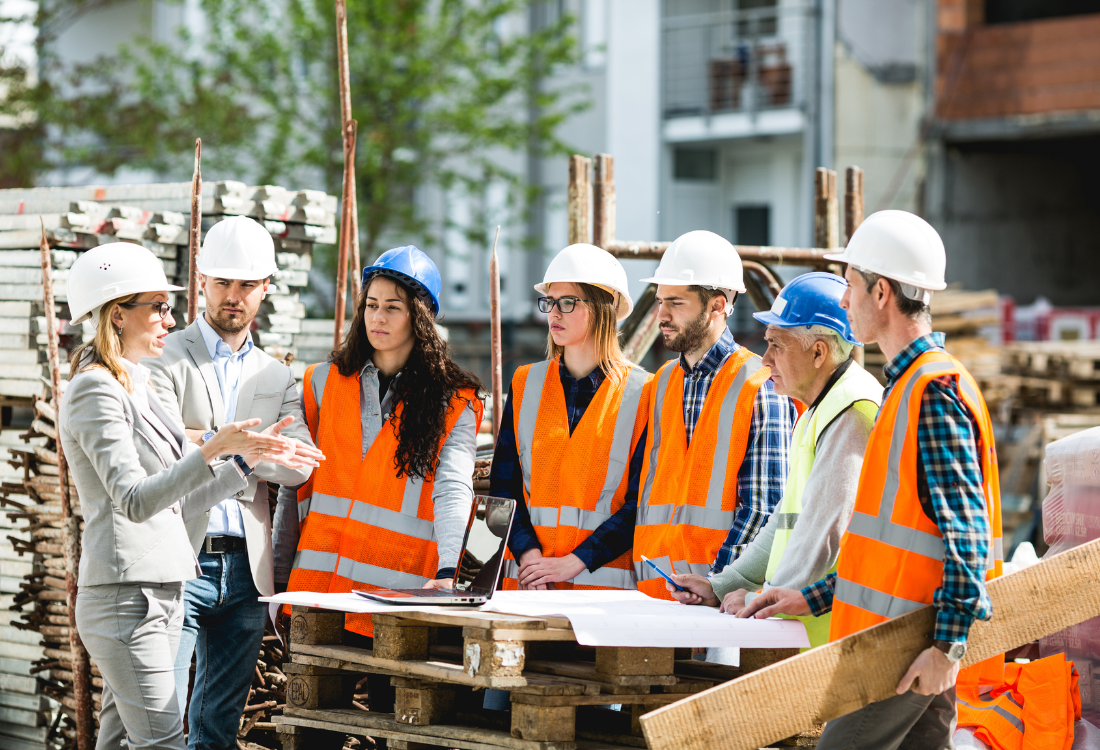
Solving the Construction Workforce Crisis Through Greater Opportunities For Women, BAME, LGBTQ+ and Workers with Disabilities
Among the issues facing the incoming Labour government are long term, structural difficulties within the UK construction sector. It’s not that there’s any shortage of demand. Demand for housebuilders, contractors, and skilled trades people of all kinds has never been higher, and this is only set to grow over the next five years. What is lacking are the boots on the ground to deliver these projects. It’s not so much that the sector has a skills shortage, as an outright personnel shortage, described in a sobering article in Construction and Civil Engineering Magazine in May 2024 as a ‘workforce crisis’.
The article cited a recent CTBI (Construction & Trade Business Institute) report that highlighted the need for at least 10,000 additional workers before 2029 to meet forecasted industry demands.
Why Is The Sector Facing A Workforce Crisis?
The difficulty facing the construction sector is primarily a demographic one. The average age of a construction worker in the UK is now over 50, and since the pandemic, a growing number of skilled and experienced professionals have left the sector due to retirement and health issues, or have transferred to ‘white-collar jobs’ away from site.
Unfortunately for businesses and customers alike, this demographic segment includes most of the sector’s most experienced veteran workers. Technical skills and knowledge are draining away from the industry at an alarming rate, and the worrying thing is that there aren’t sufficient new professionals in the pipeline to secure the workforce that the industry needs to deliver future demand. Young people aren’t joining the construction industry in sufficient numbers, or in the necessary roles, to sustain current levels of growth – the result of a general failure to shift negative perceptions of the industry and successfully communicate career advancement opportunities to new graduates and school leavers.
The Impact Of Workforce Issues On Construction Projects
Workforce issues have the potential to cascade throughout the construction supply chain, causing contractors to struggle to meet deadlines, stalling infrastructure projects, and increasing project costs. And while these issues have been partially mitigated through admirable efforts to broaden accessibility to women in construction – an ongoing but so far promising project – and the adoption of various automation technologies to boost productivity, there is still more to be done to replace the skills that are being lost on a daily basis.
Welcoming Back Experienced Workers
All those aged 25-50 who are not yet close to retirement and have previously worked in Construction but have left the industry should be encouraged to return, knowing that they will be welcomed back. When there is a shortage of skilled workers this often applies across many industries at once which can lead to job shortages elsewhere, and workers thinking of returning to familiar ground. We can make the most of this opportunity by actively promoting return to the industry, and welcoming back those with knowledge and expertise. This makes it all the more of a priority to address the issues that caused them to leave Construction in the first place.
Opening The Doors Of Diversity
Many high-ranking industry stakeholders used to assume that women simply didn’t want to work in construction. That is, until genuine efforts were made to make the sector a more accessible, safer, and more rewarding place to work for women. Once these initial steps were made, in came the interest. There are now thousands of women working in the industry at all levels of construction, from business owners and consultants to (albeit still a minority) plant operators and tradespeople.
Reviewing the demographics of the sector, it’s clear that other groups of society are also chronically underrepresented. The British construction sector is, primarily, still a ‘white, straight, male’ industry, with people of colour, LGBTQ+ individuals, and people with disabilities forming a tiny minority, both onsite and in the office.
The reasons for this are, sadly, the same as those that barred opportunities to women for so many years: outdated or prejudiced attitudes – or the perception by people outside the sector that workers in the construction sector could discriminate against them, whether or not this is genuinely true.
Granted, there are still some racist, sexist, homophobic, and transphobic attitudes among some workers and many sites have a lot of work to do to make themselves more diverse and inclusive workplaces.
However, these attitudes and the structures that support them are not as common as they used to be. Many of the workers leaving the sector are taking their prejudices with them along with their skills. Also, education and training is starting to do its work. A lot of people simply weren’t aware that their ‘banter’ was excluding or alienating people, and attitudes have changed as a result.
Communicating Change And Opportunities
The construction industry doesn’t just have a workforce issue, but a communication issue. More needs to be done to communicate the genuine and ongoing initiatives within the sector that are opening doors for a more diverse and forward-looking workforce. As with many initiatives, the onus for this lies not with the government but individual businesses, who have the most to gain from wider opportunities, and the most to lose by failing to reach out to a new generation of workers ready and willing to take up construction roles.
Although women now make up more of the Construction industry than they ever have historically, it’s only in the last few years that we’ve started to see active promotion of the industry for women who are entering the workforce or perhaps considering a brand new career. Additionally, when we do see advertisements, they can give the impression that Construction involves solely doing very physical labour on site, doubtless leaving many potential industry joiners under the impression that unless they can lift heavy objects and have excellent physical health, they’re out of luck.
We could change this by implementing genuine education on exactly what Construction involves and the sheer diversity of job types and careers available. This knowledge implementation should promote a diverse range of people working in the industry and start as early as primary and secondary school alongside encouragement of STEM (Science, Technology, Engineering and Maths) subjects for all.
Advertising campaigns promoting Construction, as well as social media, such as Instagram and TikTok, are great platforms to showcase all types of people who are thriving in the Construction industry. The aim should be to break stereotypes and show that everyone who enters the industry can earn very good money and have a satisfying career.
Where To Find Out More
More information about diversity in construction can be found through some of the campaigning organisations doing so much to improve accessibility and opportunity in the sector. Women into Construction is a trailblazer for gender equality in construction in the UK and internationally, BPIC Network is an advocacy charity for racial equality, and the charity Consortium is actively campaigning for greater LGBT+ inclusion in the industry.
Image Source: Canva
Click on the categories below to find out more about:

Connect with Us
Share this Page
More Posts
Recent Posts
- Celebrating Neurodiversity in Construction
- How to Encourage Women into Construction
- The Triple Threat To Contractors And Their Housing Projects
- SC4 and Lovell host 30 carpentry students
- Improving Safety And Wellbeing For Women In Construction
- Timber Tales: Exploring The Art And Science Of Timber Construction
